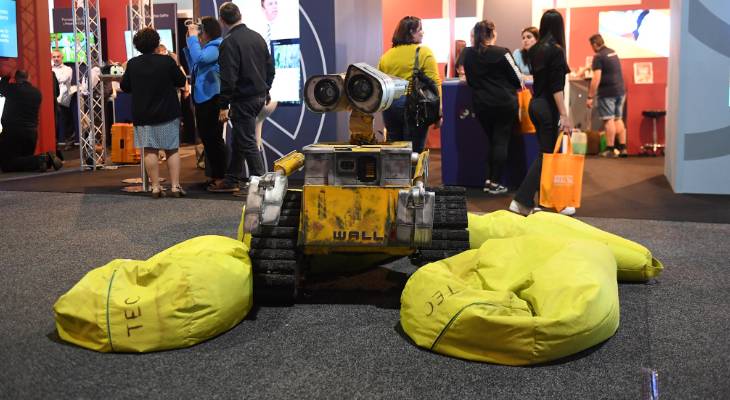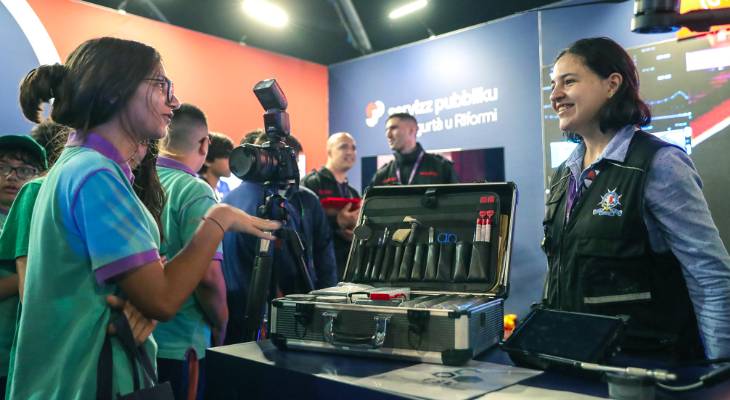The Public Service held its first ever EXPO, intended to shed a light on the enormous work that goes on behind the scenes, to provide the Maltese public with several vital services. The EXPO, which was held between the 10th and 12th May in Ta’ Qali, also celebrated the thousands of men and women behind the Public Service and their dedication to their work.
The public could take a glimpse into what many sectors might look like in the future. For example, sophisticated drone technology is currently being tested to facilitate the work of farmers. Using remote-controlled aerial advantage, farmers will be able to survey their fields to know exactly what their crops need. A large, specialised drone will then water the produce itself, even delivering pesticides if necessary.
Another completely automated robot, which is being tested in the same field, helps farmers plough the fields, and remove any unwanted vegetation that may stifle the growth of the yield. This is touted as bringing with it an untold improvement on the way these tasks are currently carried out, helping the farmer be more efficient.
Smart irrigation systems will use sophisticated sensor technology to alert an automated mechanism that the fields require watering. The technology, which is being tested by the Gozo Ministry, will reduce waste of water and human error.
Still coming from the sister island, a number of other innovative projects were on show at the EXPO, including a VR experience recreating the lost Azure Window of Dwejra, a prototype for an interactive public bench that provides information about popular Gozitan personalities, as well as an AI-powered software to inform members of the public about their expected travel time to get to the Gozo Ferry.
Moving to the Transport Malta stand, technical staff were eager to explain how their Uncrewed Survey Vessel is used to monitor and provide detailed reports about the seabed. In fact, the bright yellow remote-controlled craft was described as providing unparalleled visibility in depths from 14cm to up to an impressive 200m. This data is in turn translated into crucial topographic maps of the seabed which are often necessary when carrying out specialised marine operations.

DOI Photo by Clifton Fenech
Infrastructure Malta showed off an ambitious project which they will be inaugurating later this year, and which is set to reduce a great deal of pollution in the Grand Harbour area. The Shore-to-Ship project, costed at €49.9million, will make it possible for cruise liners to plug into the Maltese energy grid and have all their electricity needs provided for, instead of running their polluting engines throughout their stays with us. The project will see four points installed at Pinto Wharf and another at Boiler Wharf in Senglea, and is expected to reduce the pollution coming from this source by around 90 per cent.
Members of the public could also see what a real-life Crime Scene Investigator tool kit really looks like. In fact, personnel from the Malta Police Force - Forensics Unit displayed specialised instruments that allow them to detect and pick up all sorts of materials from a crime scene, including chemicals, explosives, bodily fluids or drugs. Advanced 3D mapping technology allows forensics staff to record the exact details of the scene of the crime. Using VR technology, a user can navigate the virtual environment, just as if they were present on the spot – useful to revisit a crime scene in the future possibly at Judicial stage.

DOI Photo by Omar Camilleri
Moving to the cultural sphere, the team behind the Teatru Manoel revealed how they are currently 3D-scanning thousands of costumes, some of which have historical significance, with the plan to have a virtual catalogue of the best pieces online. The National Archives showed how historical documents going back hundreds of years are being scanned for digitalisation purposes, while staff from the Restoration Directorate explained to the public how they use advanced 3D laser modelling to create surveys of facades prior to restoration. These in turn produce detailed reports which provide accurate costings, based on the deterioration of the building.
Malta Libraries explained how its unique digital membership gives subscribers access to an infinite world of resources that goes beyond books from all their libraries all over Malta and Gozo. In fact, its digital offering includes e-books, audiobooks, magazines and more, as they plan to be able to offer films and documentaries on the same platform, in the near future.
The national nursery within Project Malta makes sure that Malta’s indigenous plants are saved from extinction. Similarly, botanical experts from the Plant Protection Directorate monitor thousands of species to prevent loss of fauna to diseases. Using advanced biochemical methods, they ensure that endangered species are propagated and protected.
Taking a peek into the complex journey Malta’s electricity and water go through to make it to our homes, Enemalta engineers explained the advanced methods used to supply these essential services. Seeing a cross-section of the actual interconnector cable that supplies Malta with electricity from Sicily, and then following how it is supplied to all homes, via a complex network of substations and other delivery points, provides an insight onto a service often taken for granted. Same with all the water supply system, which nowadays is managed completely digitally.
The Institute for Tourism Studies provided a charming conclusion to the tour, showing innovative garnishing methods for cocktails, with eye-catching flavoured smoked bubbles, typically used in high-end restaurants.
Main Image:
